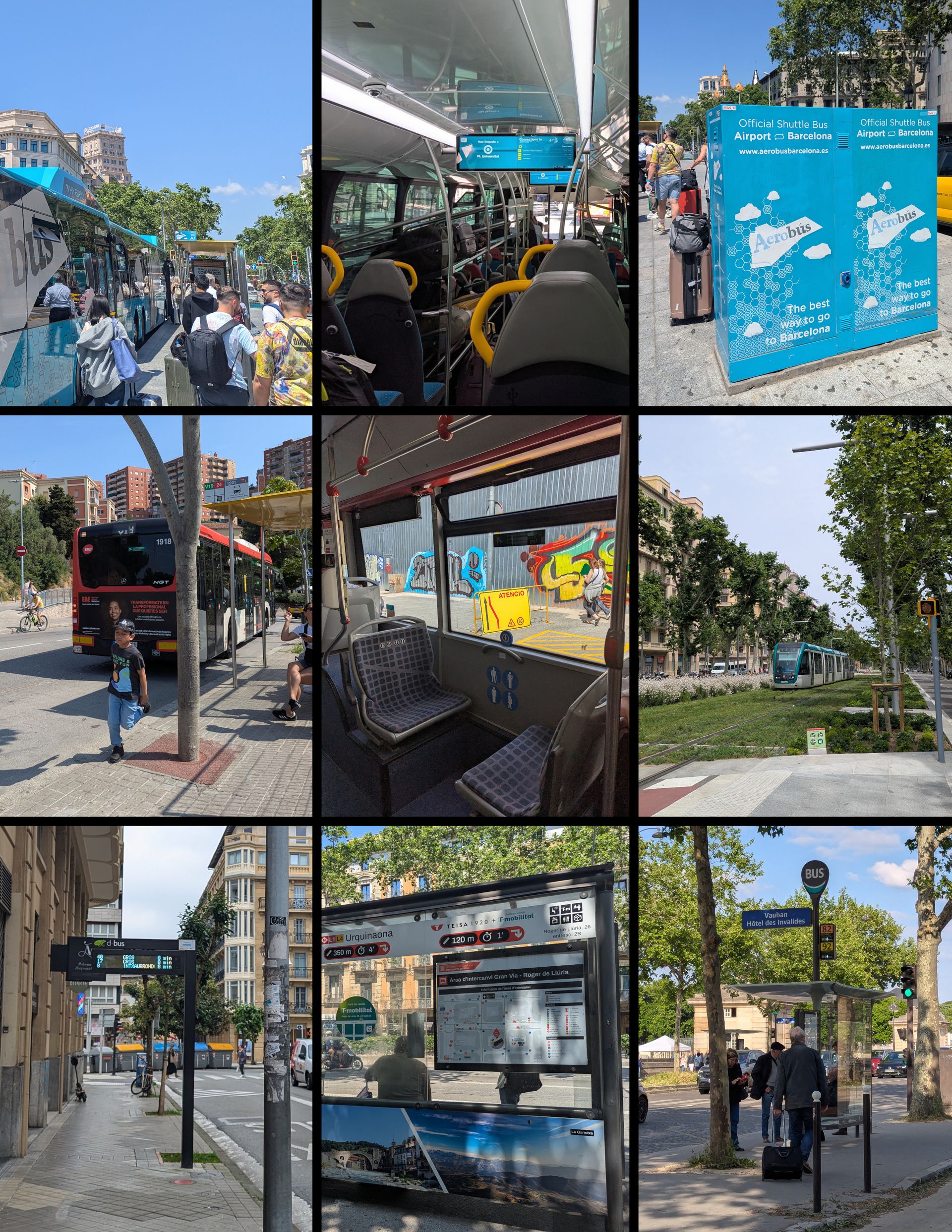Welcome to The Weekly Journey - your two-minute journey through the world of mobility and beyond. Use it to stay informed, find a new go-to source, or just have a peek inside how we think. Brought to you by the team at Journey.
A Journey insight. 💡
Trip Report: “No Thanks, I’ll Take the Bus”
What a walking holiday through Northern Spain reveals about designing more inviting transit systems.
This summer, Amanda — Journey’s Transit Analytics Lead — spent time walking the Cami de Ronda and exploring Costa Brava, Barcelona, and San Sebastián. And while her trip was focused on trails and time with friends, her transit brain never turned off.

Her first impressions came via airport and intercity buses. Some were awkward — like navigating a packed Paris metro with luggage. Others were delightful — like stepping onto a Barcelona airport shuttle with real-time info, clear signs, multilingual ticket machines, and a branded experience that made her feel immediately oriented and welcome. Above all, direct and frequent connections to city centers and nearby smaller towns made it easy, and more affordable, to travel without a car.
In the U.S., investing in airport transit service isn’t a guaranteed homerun. These services can be expensive to operate at the needed frequency and span, and due to limited resources and funding, it could mean shifting resources away from routes serving daily riders. Ridership potential is also frequently overestimated. But in the right context, airport transit can act as an "ambassador" to the larger system, introducing new riders to transit. The key is to make it seamless: frequent enough that travelers and workers don’t stress about wait times, running early and late enough to match flight schedules and shifts, and integrated into the larger transportation system so people aren’t stranded. Airport transit that is infrequent, expensive, or confusing is unlikely to win repeat riders.
That ease continued in local systems. Tap-to-pay made boarding fast. Real-time screens and stop announcements added confidence. Consistent branding and signage (with universal icons) helped both visitors and locals navigate without stress. Dedicated baggage areas and priority seating showed that transit had been designed with people in mind. These seemingly small design choices build trust and comfort—critical for attracting and keeping riders.
Of course, transit in Spain and much of Europe benefits from major structural advantages: compact urban form, higher levels of funding, more frequent service, and strong political support for transit as a public good. These fundamentals matter most. But during this trip, by slowing down to “smell the transit roses,” Amanda noticed how the small touches — intuitive signage, seamless payments, thoughtful seating, and real-time information — can make transit feel more inviting and intuitive to use. While design details alone won’t transform ridership, they can help build momentum and improve the rider’s experience.
🧠 Takeaways for the U.S.
✈️ Airport transit can be a gateway — when designing or improving an airport bus or train service prioritize frequency, reliability, affordability, and seamless system integration.
💳 Reduce friction at boarding — tap-to-pay, real-time arrival info, and announcements help keep riders informed and at ease.
👓 Design for comfort and clarity — clear signage, amenities at the stop and on board, and accessible paths helps transit work for more people and trip types.
🗺️ Prioritize clear signage and branding — use consistent visuals and universal icons to help both visitors and locals navigate confidently.
🧑🤝🧑 Center the rider experience — small operational and design details can make transit more convenient.
Where to start: Transit improvements take time, but many of these changes can start with small pilots. Add tap-to-pay on a high-ridership line. Launch an airport shuttle for a major event. Try multilingual signage at transfer hubs. Whether you’re walking, waiting, or boarding — every interaction shapes trust. And trust builds ridership.
Want to share your own #TransitRoses moment? Tag us or reply to this newsletter with what stood out to you on your last trip.
A few interesting things. 🧠
📖 Chicago Zoning: Chicago City Council approved some important zoning ordinance updates that reduce parking mandates and enable more affordable housing near transit. Steven Vance has the details.
🚌 New Transit Alert!: Pittsburgh Regional Transit opened the first phase of the University Line - a new BRT service that will connect Downtown Pittsburgh to Uptown and Oakland.
🚲 Biking: New research out of Germany finds that people use electric bikes in fundamentally different ways than standard bikes - and much more like cars. Interesting implications for multimodal planning moving forward.
🚶♀️➡️ Walking: A team from NYU used Meta’s Segment Anything Model to measure crossing distances at other 3 million intersections throughout the United States. Check out their work here and a summary here.
💪 Job Postings:
GCRTA is looking for an Engineering Project Manager to support Cleveland’s BRT program.
New York MTA is looking for an intern to support their bus service planning team.
The Chicago Region Trees Initiative is looking for someone to implement and lead a Tree Ambassador Program.
A quick Journey update. 🏗️
👩🏫 Upcoming Events:
ACT: Lauren will be attending and presenting at the ACT Annual International Conference in New Orleans, which starts this Sunday! Lauren will be featured on two panels:
Stadium and Megaevent Mobility Playbooks - Monday, August 4 at 10:30 AM
A Traffic Engineer and a TDM Expert Walk into a Bar - Tuesday, August 5 at 11:10 AM
Movability: Lauren will also be at the Moveability Summit in Austin on September 19. Make sure to check out her panel on Best Practices for Employee/Student/Residential Pass Programs.
APTA: Dan will be in Boston during the APTA TRANSform Conference on September 14-17.
📚 Book Clubs:
ACT Book Club: Lauren hosts the monthly Association for Commuter Transportation Book Club. Next month, the club is switching things up a bit and reading Supercommunicators by Charles Duhigg. TDM supercommunicator Jeffrey Tumlin will join the next meeting to share his insights and reflections. Sign up here to join us on August 27 at 3:00 PM Eastern / 12:00 PM Pacific.
Chicago City Builders Book Club: Lauren co-hosts the monthly Chicago City Builders Book Club - check out their new LinkedIn page to learn more. They just posted their upcoming reads, including:
August 14: The Loop: The “L” Tracks That Shaped and Saved Chicago by Patrick T. Reardon
September 24: Make No Waves, Don’t Back No Losers by Milton Rakove
November 5: Grafters and Goo Goods: Corruption and Reform in Chicago by James Merriner
Did someone forward you this newsletter? Be sure to subscribe to get The Weekly Journey in your inbox or follow us on LinkedIn.

